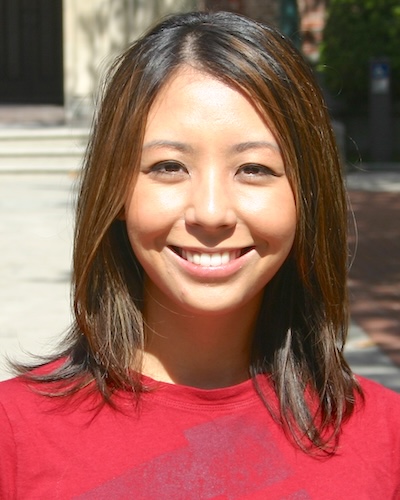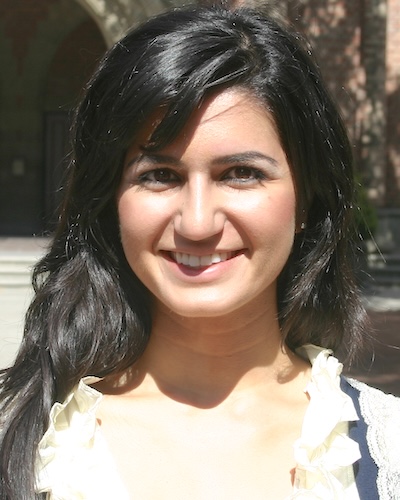Student Blog
Classes

Inter-Disciplinary Student Collaboration ⟩
September 20, 2011, by Kimberly
Classes What are OS/OT?
One of my electives this semester is called “Occupational Therapy in Primary Healthcare Environments.” In this class we are looking at the various roles occupational therapists can take in primary healthcare settings like family clinics, emergency rooms, pediatric clinics, assisted living facilities, etc. It is a newer field for OT and focuses mainly on prevention and wellness. Also in this class, we are part of a pilot study titled Inter-Professional Geriatric Curriculum (IPGC) where we get to work with students studying to be doctors, physician’s assistants, pharmacists, and physical therapists. With this team, we will go visit a resident at a local assisted living facility and talk with him/her from the lens of our different disciplines and provide recommendations based on our different areas of expertise.
In preparation to my group’s first visit with our resident, we decided to meet for dinner to discuss strategy and get to know each other. We got to go around and describe what really we do in our professions, discuss our expectations for this class, and then discuss an approach to going in and talking with our resident. It was so inspiring to see the collaboration that happened naturally for all of us. We are all pretty easy-going, but no one was fighting over turf, stepping on others’ toes or trying to push their agenda. Hopefully when I graduate and enter the field a year from now, these kinds of relationships and partnerships will be present wherever I end up working. It’s fun to be able to understand/respect the other fields of expertise while also contributing OT’s unique perspective.
⋯

My First OT Elective ⟩
September 19, 2011, by Chelsea
Classes What are OS/OT?
The second year of the Occupational Therapy program at USC gives students the opportunity to take their first OT elective course — their first opportunity to choose a course they are interested rather than having it be required! After doing my third Level I Fieldwork in hand therapy, I had a heightened interest in the field and in the prospect of getting certified to be a hand therapist. Although there were many awesome courses to choose as my one elective this fall, I had no trouble making the decision to take Hand Rehabilitation with Lisa Deshaies.
So far it has been incredible and is “hands down” my favorite class! We have learned so much practical knowledge about the anatomy of the hand and all kinds of different hand deformities and injuries. Professor Deshaies keeps the class interesting by reading us excerpts that relate to the hand in Sports Illustrated, showing us videos of the progress and personal struggle of a patient she treated, bringing in actual hand and arm cadavers to get a more “hands on” anatomy understanding, and leading great class discussions. Currently, I’m working on a Hand Observation Log for which I have been observing how people use their hands daily for functioning, communicating, and other daily activities. Surprisingly, you can tell a lot about a person by how they are using their hands. Some of the best aspects of the class are that the class is at night so I don’t need to wake up early, and it is credit/no credit making it less stressful than my other courses . . . however, it can be a bit of a “handful”!
⋯

Why I Chose Occupational Therapy ⟩
September 13, 2011, by Chelsea
Classes What are OS/OT?
Occupational Therapy (OT) seems to attract a diverse array of people, but all of which have a few key characteristics in common: they are amicable, creative, investigative, caring, and interested in many different things. I consider myself as falling into this category. I’ve always had many different hobbies ranging from playing tennis to doing black and white photography. Similarly, I have always had many different interests in school — mainly in the domains of science and art.
When I came to USC as an “Undecided” freshman, I started by taking a few biology and chemistry classes and a few art history and photography classes. I was having such difficulty deciding what to declare as my major that at the end of my freshman year I visited USC’s career counseling office where I discovered the happy-medium that was occupational therapy. I learned that occupational therapy required both creative thinking and scientific knowledge; and that you could find the therapeutic value in the activities you love doing and incorporate them into therapy. My first OT class that I took was Intro to Occupational Therapy with Kate Crowley and, from that point on, I knew I wanted to be an occupational therapist. Kate’s brilliant way of engaging her students makes everyone look forward to her class. It was so interesting to evaluate our own daily occupations and determine how they were impacting our health. I started to realize what an enormous role my hobbies had on my daily health and well-being and became more cognizant of how to balance my lifestyle.
Currently, I am in the second year of the Master’s program and I’m taking my first OT elective: Hand Therapy. One of our first assignments is to observe hands and record what fascinates you. People can be so creative with their hands and use them so intricately. I think it is such a good example of how occupational therapy allows you to combine creativity with science because the hand is so complex. Now I just need to think of a way I could incorporate therapeutic aspects of tennis and photography into hand therapy . . . hmmm.
⋯

Wrapping up the End of the Program ⟩
April 20, 2011, by Carissa
Classes What are OS/OT?
Time flies by so fast! I can’t believe that next week will be our last week of classes. Looking back at the semester, I feel that so much has happened and so much is still happening. My lifestyle redesign course has really helped me to work on balancing my personal routine and creating healthier habits. The results have been maintained for the past few months . . . I hope I can continue it outside of the structure of my school schedule! While experiencing this class as a client and student, I also learned many professional skills. Last week, I successfully held my first structured group on how to create a healthy workspace for optimal functioning. With regards to my research classes, I have been able to learn so much about creating an evidence-based practice. In my qualitative research course, I am currently finishing a group project where we interviewed several seniors who have experienced spousal loss. We were able to gain insight into their lives with their spouses, as well as their current lives in relation to their experience of occupation. I laughed and cried through the in-depth stories provided in the interviews. This is one amazing thing about occupational therapy: getting the chance to really get to know our clients and learn about the things that really matter to them. Also, in the process of learning about others, I have learned so much about myself. Our program has worked to build me as a professional and has also guided me into a greater understanding of myself. I am so thankful for the personal and professional skills that I will carry with me into my career and for the rest of my life.
⋯

Electives! ⟩
March 2, 2011, by Helen
Classes
Graduation is quickly approaching . . .
During the last semester of the program, you are to take eight units of electives. Last night was our dysphagia final. 😊 Dyshpagia was an eight week, 2 unit elective I took this semester and I LOVED it! This dysphagia elective counts towards your advanced practice certification, if you so choose to pursue that within the next five years. As I was studying for the final exam, I realized how much I have learned in only the last eight weeks. Another elective I am taking concurrently is at University Hospital, where I am able to gain experience in both physical disabiltiies and mental health. As we’ve been seeing patients this semester at the hospital, I’ve been able to feel the difference in my knowledge of dysphagia on my interactions with patients. I am able to notice more as we do room visits about the quality of the patient’s voice, eating habits, posture, etc. While an eight week course may seem short and very intense, I have learned an incredible amount of information and am very grateful for having taken the course.
I am also taking a Sensory Integration elective that is four units which also works towards certification in Sensory Integration. While I am intending to work with adults in the future, Sensory Integration is a topic that impacts many populations and knowledge of Sensory Integration techniques can be beneficial in any setting. This past weekend, I attended a conference organized by Pediatric Therapy Network on Sensory Integration practices and it was great to see current research that is being done in the field and see some of our professors presenting. Having our coursework intertwine with our fieldworks and to attend conferences seeing how what we are learning is being implemented in research is my favorite part of this OT program. I enjoy this aspect of our graduate program because it really provides a sense of how we can personally impact current practice and research.
I have really enjoyed the electives I have taken this semester and really feel like I’ve gained so much insight into specific practice areas. As graduation is quickly approaching, I realize more and more how much we have learned in such little time!
⋯





